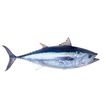Find articles on products of interest

Thailand Tuna insights
Unlock the latest Thailand Tuna Insights with expert news and analysis to stay ahead of market trends and capitalize on emerging opportunities.
Explore Insights filtered by market country
262 content(s) found
Opinion
Explore insights from our global team of market analysts on trending Thailand Tuna topics through their expert opinions and analyses.
On-the-Ground Updates
Stay updated with near real-time insights on market conditions, supply chain disruptions, and pricing changes for Thailand Tuna, delivered by our on-site experts.
News
Monitor the latest developments in agricultural news, including policy updates, business trends, technological innovations, and market dynamics impacting the Thailand Tuna market.
Weekly Product Updates
Receive exclusive weekly updates on Thailand Tuna, provided by our global market analysts.

Report
Download premium reports that highlight major trends, emerging opportunities, and critical challenges within the Thailand Tuna industry.
Trending topics
Choose a topic to explore related articles on key issues that shape decision-making in the Thailand Tuna industry.

Market & Price Trends
Stay informed on local and global agricultural market trends, price movements, and industry events that affect your business

Regulation & Compliances
Learn about key trade policies, legal requirements, and compliance considerations that impact global agricultural trade

Supply Chain Management
Discover proven strategies to improve efficiency, reduce costs, and streamline operations throughtout your agri-food supply chain

Innovation & Technology
Discover how the latest innovations in technology are reshaping agri-food supply chains around the world

Sustainability & Environmental Impact
Gain insights into sustainable agricultural practices and explore the best methods to minimize environmental impact in your agribusiness

Food Safety & Quality
Learn the top global practices for food safety and quality control from production and processing to storage and transport across the supply chain

Emerging Market Opportunities
Be the first to explore new market opportunities and understand how they can affect your agribusiness
Related categories of Tuna
Take a look at the related categories for Thailand Tuna. Click on any category to read a curated selection of insights specifically designed to address your business needs.
Market countries of Tuna
Choose a country to find Tuna insights of the country.
Popular Tuna selection
Interested in Thailand Tuna? Explore the top attributes and options to gain deeper insights into your product of interest.
Variety
Yellowfin Tuna (=Thunnus albacares =Ahi) | Skipjack Tuna (=Katsuwonus pelamis =Balaya =Aku =Ocean Bonito =Artic Bonito =Mushmouth =Stri | Bluefin group - Albacore Tuna (=Thunnus alalunga =Longfin Tuna =Ahipalaha =White Tuna) | Bluefin group - Bigeye Tuna (=Thunnus obesus) | Bluefin group - Atlantic Bluefin Tuna (=Thunnus thynnus =Giant Bluefin Tuna =Northern Bluefi | Bullet Tuna (=Auxis rochei) | Bluefin group - Southern Bluefin Tuna (=Thunnus maccoyii) | Kawakawa (=Euthynnus affinis =Mackerel Tuna) | Longtail Tuna (=Thunnus tonggol) | Bluefin group - Pacific Bluefin Tuna (=Thunnus orientalis)
Processed style
Frozen | Fresh (=Chilled=Raw) | Frozen - Raw Frozen | Frozen - IQF | Smoked | Ground | Frozen - Cooked Frozen | Cooked (Not Frozen) | Salted | CO Treated
By clicking “Accept Cookies,” I agree to provide cookies for statistical and personalized preference purposes. To learn more about our cookies, please read our Privacy Policy.

















